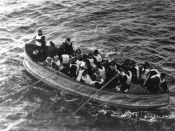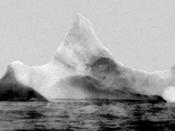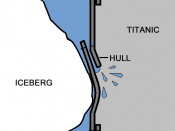Since 1912, when the Titanic sank on her inaugural voyage, there has been many theories behind the mystery of how this unsinkable ship ended up on the bottom of the Atlantic Ocean. Up until now, the theory has been that an iceberg tore open a 300-foot gash in the
side of the 900 foot-long luxury liner. Even after 1985, when Robert D.
Ballard founded the Titanic, the expeditions mainly focused on the beauty
of the ship and not the damage it had sustained from the iceberg. Of course
the Titanic is submerged in many feet of mud so searching for the damage
has been impossible.
Just recently researchers were able to determine the damage to the ship by imaging the sunken liner with an acoustic device known as a sub-bottom profiler. They examined the ship's starboard side, finding a series of six thin openings along the hull.
This implied
that the iron rivets along the plate seams probably popped open creating small gaps for the water to come in. Two wrought-iron rivets from the Titanic's hull were recently hauled up for scientific analysis and were found to be riddled with unusually high concentrations of slag, making them brittle and prone to fracture. From the observation, researchers concluded that since these seams were roughly 20 feet below the waterline, there was an enormous amount of pressure from the seawater, which made its way into the compartments very quickly.
Navel Architects and marine engineers claim the Titanic was moving at an estimated speed of 22 knots before it collided with the iceberg. They believe if the Titanic was moving half as fast, the force of the iceberg's impact and the damage done to the plate seams would have been much less. Since the pressure would have been...


